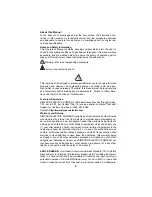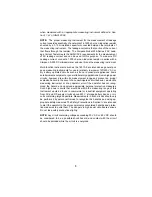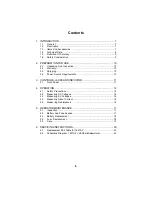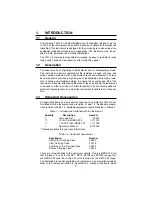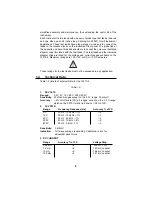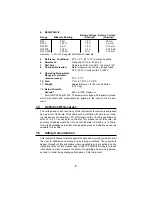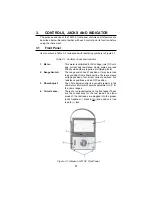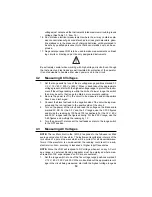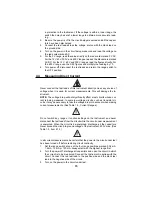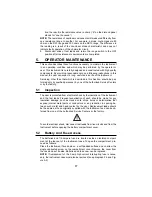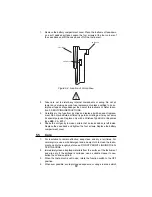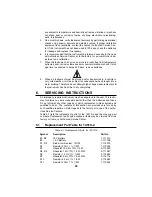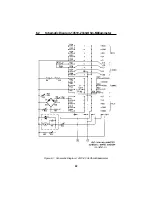
15
a protection to the Instrument. If the voltage is within a lower range, the
switch then may be set at a lower range to obtain a more accurate read-
ing.
2.
Be sure the power is off in the circuit being measured and all the capaci-
tors have been discharged.
3.
Connect the test lead across the voltage source with the black lead on
the ground side.
4.
Turn on the power in the circuit being measured and read the voltage on
the red scale marked AC.
5.
For the 3 V range, read the value directly on the red scale marked 3 V AC.
For the 12 V, 60 V, 300 V and 600 V ranges, read on the black scale marked
AC-DC. For the 12 V, 60 V and 300 V ranges, read the figures directly. For
the 600 V range, use the 0-60 figures and multiply the reading by 10.
6.
Turn power off, disconnect the test leads and return the range switch to
the OFF position.
4.4
Measuring Direct Current
Never connect the test leads of this Instrument directly across any source of
voltage when it is used for current measurements. This will damage the In-
strument.
NOTE: The voltage drop will not significantly affect most circuits whose cur-
rent is being measured. In some low voltage circuits, such as transistor cir-
cuits, it may be necessary to take the voltage drop into account when making
current measurements. (See Table 1-3, Current Ranges.)
Do not switch any range or function settings on the Instrument and never
disconnect the test leads from the circuit while the circuit under measurement
is energized. When the circuit is de-energized, discharge all the capacitors.
Never exceed the circuit-to-ground voltage of the Instrument, 600 V max. (See
Table 1-3, item 4.12.)
In all current measurements, be certain that the power to the circuit under test
has been turned off before restoring circuit continuity.
1.
Set the range switch at one of the four range positions marked 0.06 mA,
1.2 mA, 12 mA or 120 mA. Always start with the highest range first.
2.
Turn the power off, discharge all capacitors and open the circuit in which
the current is to be measured. Connect the Instrument in series with the
circuit. Connect the red test lead to the positive side and the black test
lead to the negative side of the circuit.
3.
Turn on the power to the circuit under test.
!
!
Summary of Contents for 14510-2
Page 1: ...Simpson 14510 2 Volt Ohm Milliammeter OPERATOR S MANUAL...
Page 4: ...4 NOTES...
Page 5: ...5 NOTES...
Page 23: ...23 NOTES...


